
Mauvais Sujet is not your stereotypical, chocolate-box-pretty Victorian portrait. She’s almost uncomfortable to look at, as she is both very young and almost sensual. On her desk you can see her name, Mary, scrawled in a childlike hand. I’m not exactly sure what Madox Brown wants us to feel about her. She’s obviously idle, choosing to partake in the fruit while she is meant to be doing her lessons. But what is the underlying story here?
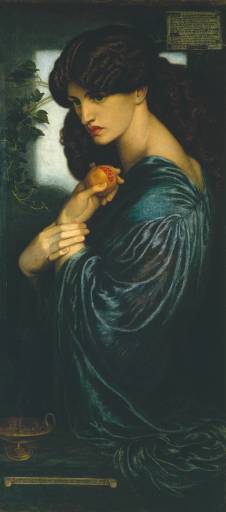
You can’t get more forbidding than fruit from the underworld. Dante Gabriel Rossetti portrays Proserpine (Persephone) after she has eaten six pomegranate seeds. Proserpine had been abducted by Hades. When her mother, the goddess Demeter, pleaded for her return, Zeus decreed that she could come home as long as she had not eaten any fruit of the underworld. Since she had eaten six seeds she was fated to divide her time, spending six months each year with Hades and six with her mother.
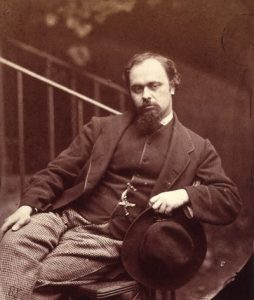
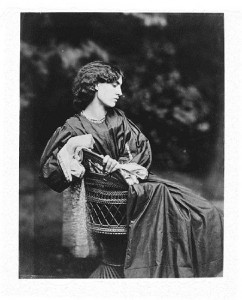

But the pomegranate is not the only forbidden fruit in Proserpine. Rossetti’s model, Jane Morris, was herself Forbidden Fruit. As the wife of Rossetti’s close friend William Morris, Jane should not have been available to Rossetti as a romantic interest. But after the death of his wife in 1862, Rossetti’s friendship with Jane developed into an intense romance. Their secretive communications were aided by the ever slimy Charles Augustus Howell. It did not remain a secret for long, though. Rossetti’s interest was obvious, as poet William Bell Scott recorded after a dinner party, where Rossetti fed Jane and paid attention only to her: ‘I must say he acts like a perfect fool if he wants to conceal his attachment, doing nothing but attend to her, sitting side-ways towards her, that sort of thing.” Rossetti and William Morris shared tenancy of Kelmscott Manor, which allowed privacy for Rossetti and Jane when Morris was away. This should not imply that Morris had no feelings about Jane and Rossetti. I think that his love and admiration for her was so strong that he couldn’t impose an ultimatum on her. It was a bohemian set-up and very ahead of its time.
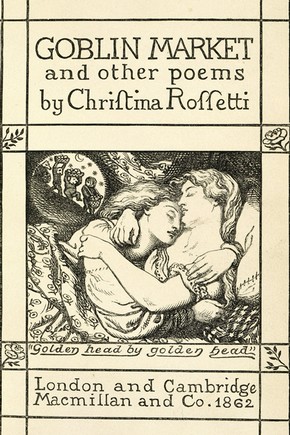
The finest example of Forbidden Fruit in the Pre-Raphaelite circle lies not in a painting, but in a poem. Written by Christina Rossetti (sister to Dante Gabriel Rossetti), Goblin Market is a narrative poem of two sisters who encounter temptation. It is a complex poem–almost too complex to delve into for a blog post simply because it is hard to narrow it down to just one theme. It both sensual and religious, with elements of the fantastic. As Serena Trowbridge pointed out, it is open to interpretation; there are so many different ways it could be read.
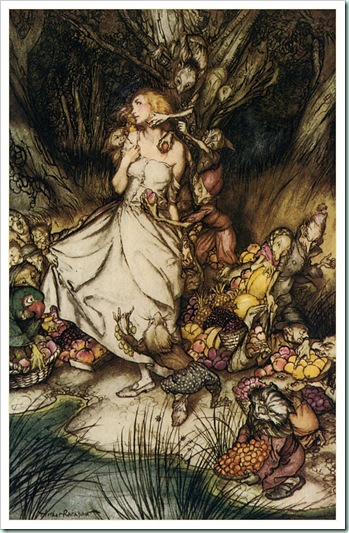
Sisters Lizzie and Laura live a fairy tale existence in a peaceful cottage near an ominous glen. Goblins emerge from the glen every morning and evening to sell their magical fruit. Lizzie resists their temptation but Laura devours the fruit, which she purchased by giving them a lock of her hair. There are consequences to eating the fruit. Laura begins to grow ill and ages prematurely. But when the noon waxed bright/Her hair grew thin and grey;/She dwindled, as the fair full moon doth turn/To swift decay, and burn/Her fire away. She can no longer hear the cry of the goblin men peddling their fruit. And she is in desperate need of more.
Lizzie sacrifices herself in order to get more fruit to save her sister. Since Lizzie has not partaken of the fruit, she can still hear the cries of the goblin men. Mouth firmly shut in order to prevent the goblins’ fruit from entering, the goblins attack her and the fruit is spread all over her body. When she returns, Laura feasts off of her body in an act that is similar to Christ’s sacrifice but is also written in explicit language. When one sister has made a sacrament of herself, the other is redeemed. Eat me,drink me, love me. It’s actually quite disturbing and uncomfortable to read in parts and I think that was Christina Rossetti’s intention.
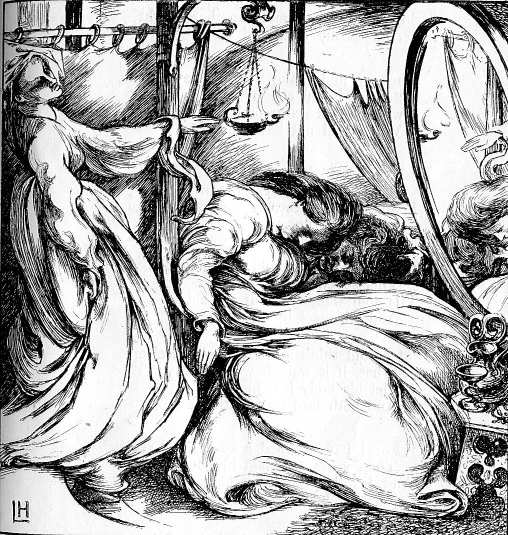
I’ve always loved the poem while being perplexed and haunted by it. Upon first reading, I wanted answers. Just what did Christina Rossetti mean? Is it sexual? Homoerotic? Is it an allegory for Christ and redemption? Or protofeminist? But now I’ve decided that the ambiguity is the reason I am repeatedly drawn to it. We can study, ponder and try to pin down Christina’s exact meaning but then that would kill the magic. Poets can’t go running around after their readers and explaining what their work meant. Sometimes a work takes on its own meaning, to be discerned by each individual reader. Whatever you choose to glean from Goblin Market is real and true because you’ve brought your own experiences to the table. In the poet’s work you found yourself. This is true for all art, be it poems, books, paintings, movies. Whatever the medium, we often discover ourselves in the works of others. Art is the only genuine Tree of Knowledge. Some people choose not to seek it. But you and I know better.
————-
I highly recommend the poetry journal Goblin Fruit. Their fantasy poetry is top-notch. Every time.
Follow Pre-Raphaelite Sisterhood on: Facebook, Twitter and now on Instagram
100 Years after her death, Jane Morris continues to inspire
The Hour Glass: On Jane Morris and Aging
What else is forbidden? How about skeletons in the closet?
Proserpine is also mentioned in Those Rossetti Lips and the photograph of Jane Morris mentioned above is included in Roman Widow (Dis Manibus)
